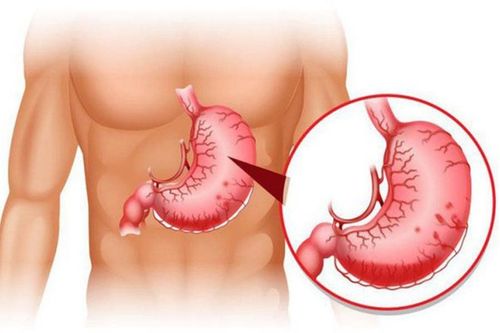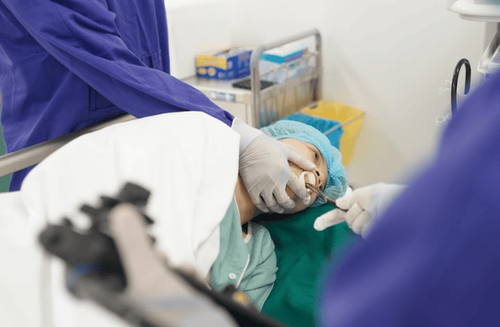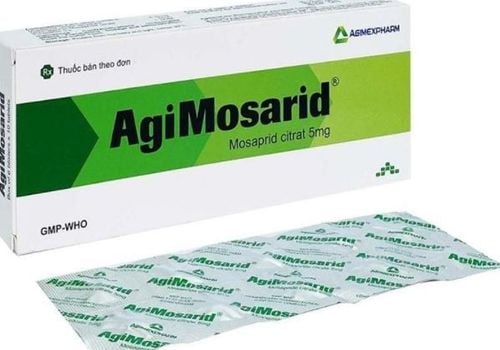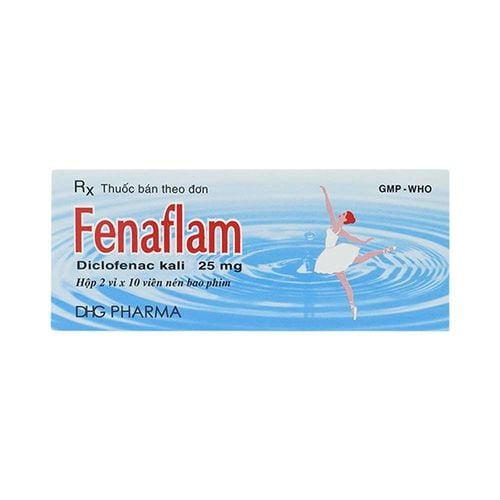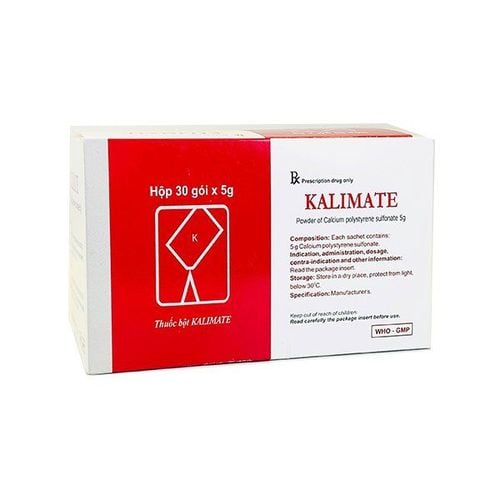This is an automatically translated article.
Posted by Doctor Mai Vien Phuong - Department of Medical Examination & Internal Medicine - Vinmec Central Park International General Hospital.Gastrointestinal bleeding is the phenomenon of blood escaping from the vessel lumen into the gastrointestinal tract, the clinical manifestation of which is vomiting blood or bloody stools.
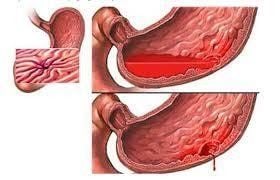
1. Birth of Hemospray®
In clinical practice, faced with a case of gastrointestinal bleeding, the endoscopist has many options for hemostatic intervention. Which method to choose depends on the characteristics of the bleeding site, the available facilities, and the expertise of the endoscopist. For cases of bleeding due to tumors, ulcers are too large, cannot be stopped by conventional methods, requiring an effective hemostatic method in these cases.Indeed, endoscopic hemostasis has been widely accepted as the first choice in the treatment of gastrointestinal bleeding not due to varicose veins. Using a combination of hemostatic, thermal, and mechanical injections is highly effective, with a success rate of 85% to 95% the first time, however, 5% to 10% of recurrences are still present. The mortality rate in such cases has remained around 7-10% over the past 30 years. In addition, conventional endoscopic interventions are not feasible for many bleeding ulcers, ulcers in hard-to-reach locations, patients on anticoagulation, which may cause injury. tissue and bleed more. In the past, if conventional methods of hemostasis failed, often the patient had to undergo laparotomy to stop bleeding, the prognosis of the patient would be very serious because of the risks of perioperative complications, the risk of surgery. , infection,...The introduction of hemostatic powders, with minimally invasive techniques and minimal intervention, including Hemospray® has contributed to solving these problems.
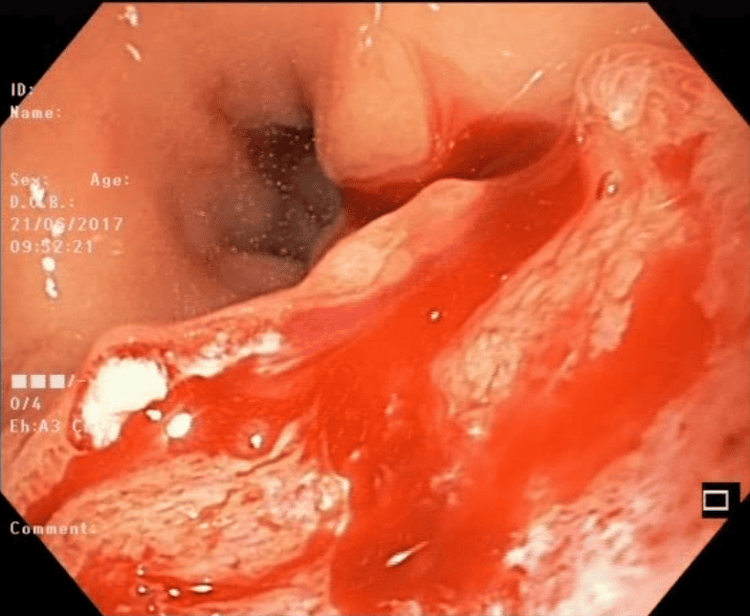
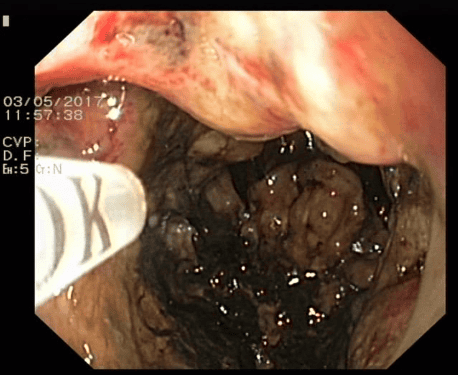
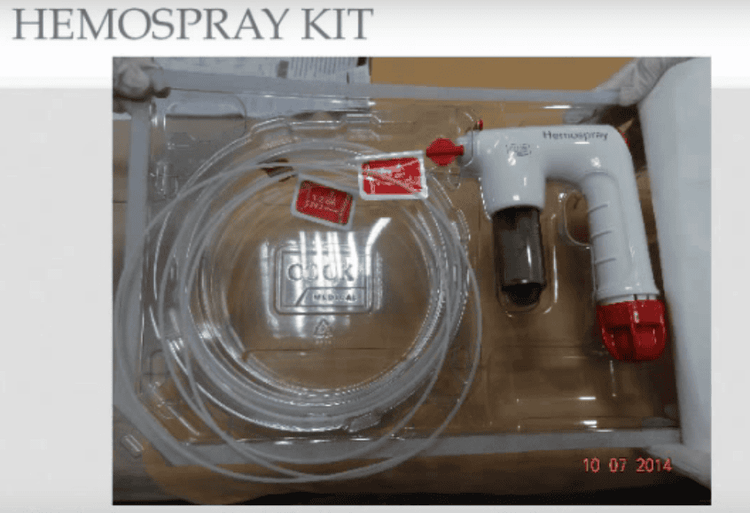
2. How is Hemospray hemostasis endoscopic intervention performed?
The patient was resuscitated as needed to achieve pre-endoscopic hemodynamic stability. Hemospray® is used initially or after other methods have failed as determined by the endoscopist.Patients and medical staff must follow routine endoscopic emergency hemostasis due to gastrointestinal bleeding. The patient must be explained to the patient about the procedure plan, cost of the procedure, instruments, success rate and bleeding recurrence of the Methods and instruments used.
Hemospray® is delivered through a 10 Fr catheter that has been inserted into the endoscopic procedure channel (Olympus, Japan). Bleeding area must be cleaned, removed blood clots before powder spraying.
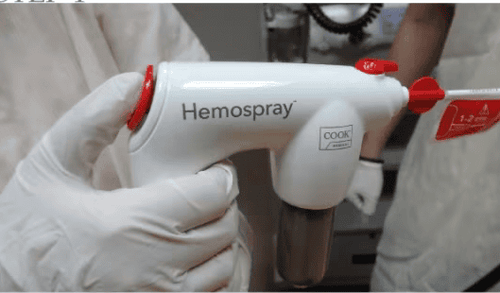
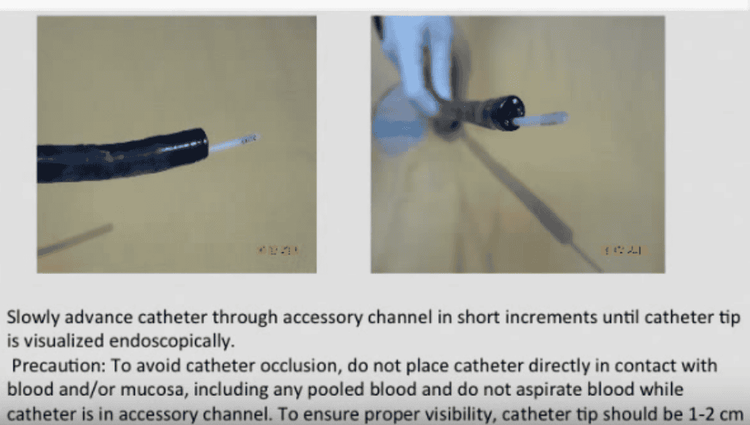
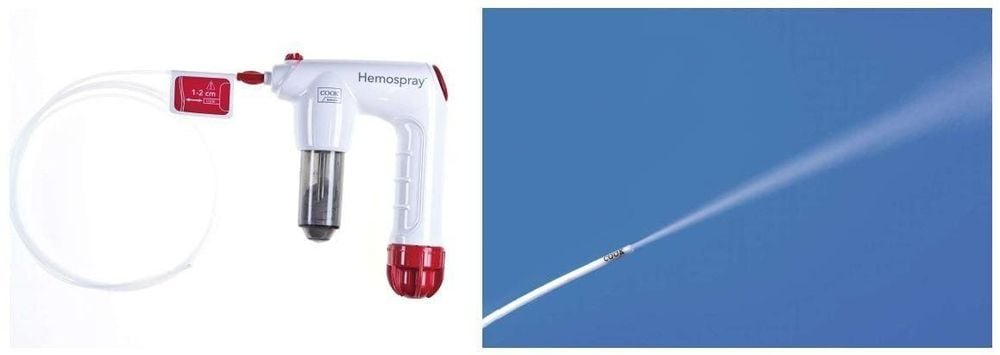
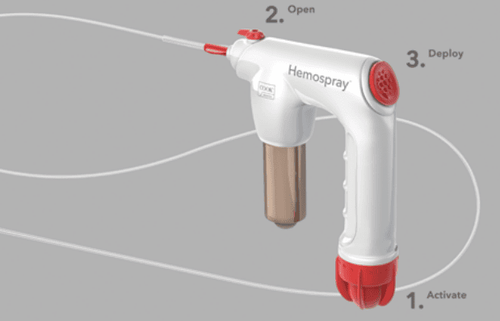
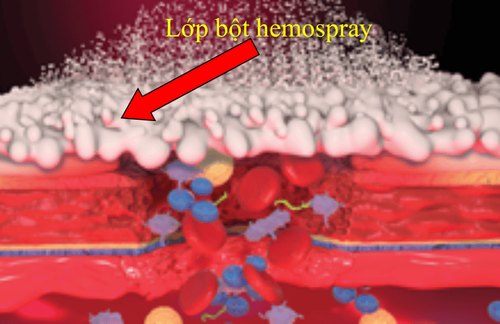
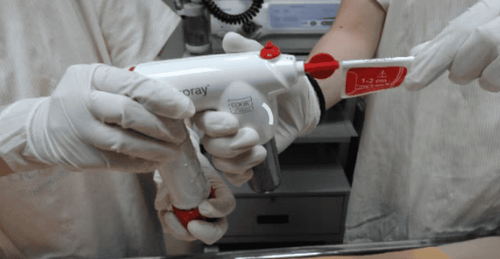
Hemospray® (produced by Cook Medical Company) is an inorganic powder, whose hemostatic mechanism is to bind to the bleeding area, create a mechanical hemostasis mechanism, and at the same time, concentrate platelets and activate coagulation factors, promote the formation of blood clots.
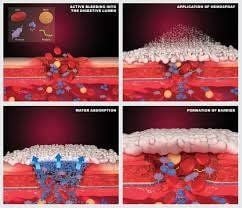
For upper gastrointestinal bleeding due to ulcers In many recent studies, Hemospray® was used initially from 50% to 95%, or Hemospray® was used in combination with other hemostatic methods from 0% to 19%, or as salvage (use Hemospray® when conventional interventions are ineffective) in 0% to 33% of patients, with hemostasis rates ranging from 81% to 100% , and bleeding recurs in 11% to 31% (2,4,5,7). In this study, we used Hemospray® in 4 patients with peptic ulcer (36%). We used Hemospray® after conventional interventions were ineffective, there was 1 patient with large duodenal ulcer who had to use Hemospray® a second time to achieve hemostasis.
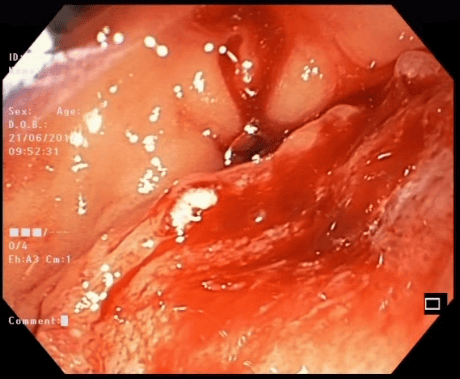
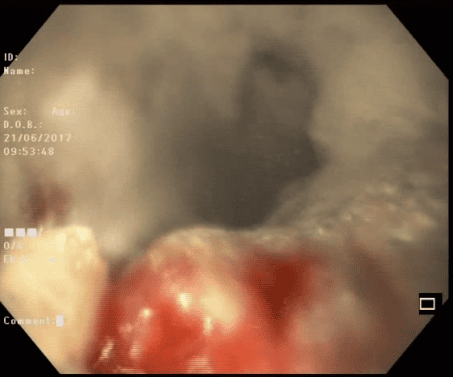
3. Gastrointestinal bleeding in patients with upper gastrointestinal tract tumors:
Leaky bleeding from gastrointestinal cancer tissue is difficult to successfully stop bleeding with conventional hemostatic methods, the success rate is < 40%, the short-term recurrence rate is up to 30%. In the past, for the type of bleeding caused by tumors, people often had surgery to stop bleeding or make DSA temporary embolism, but this method was not effective. In 2012, the author Moosavi reported 5 cases of treatment. gastrointestinal bleeding due to tumors (3 cases due to gastric cancer, 2 cases due to pancreatic cancer, breast cancer with duodenal metastasis), all were successful, no cases of recurrent bleeding after 5 days (6). Leblanc's study showed that Hemospray® had a lower 14-day recurrence rate of bleeding compared with conventional interventions (10% vs 30%), a 30-day mortality rate (10% vs. 30%). compared to 30%).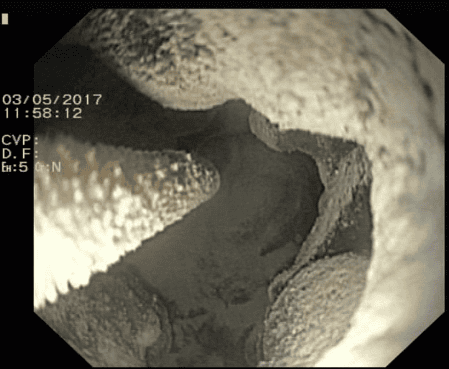
4. Endoscopic hemostasis with Hemospray powder in gastrointestinal bleeding due to ruptured esophageal varices or gastric aneurysm
There have been many studies on the role of Hemospray powder in being effective, safe and convenient in gastrointestinal bleeding caused by ruptured esophageal varices or gastric aneurysm, especially in difficult-to-reach bunions and bleeding areas. too wide, and has collapsed, but there is still a risk of recurrent bleeding, it is not possible to ligate the oesophagus or glue the gastric aneurysm.5. Success rate and recurrence rate
For gastrointestinal bleeding caused by Forrest Ia- Ib ulcer, the success rate is from 92.8% - 100%, the rate of recurrent bleeding is 13.3% - 23%. In a study by Alan Hoi Lun Yau et al., intervening upper gastrointestinal bleeding from various causes, using Hemospray® at the beginning or in combination with other methods, the success rate was 93.3%, The rate of recurrent bleeding within 7 days was 38.9% (1).6. Characteristics of Hemospray® . powder
Hemospray powder does not affect the bronchoscope and gastrointestinal mucosa. Unlike other hemostatic techniques such as colloidal injection of gastric aneurysm, there is a high risk that the Histoacryl injection solution will adhere to the surgical channel or the camera head of the bronchoscope, causing obstruction of the surgical channel, damage to the camera screen, the repair would be very difficult and expensive, Hemospray powder is easy to wash away if sucked into the test channel or adhered to the camera glass.Does not block blood vessels elsewhere. Many doctors fear that spraying a lot of Hemospray powder will cause occlusion of the visceral blood vessels, but there is no evidence of this risk.
Does not affect hemostasis. Many people think that Hemospray powder sprayed on the bleeding area, like a foreign body, prevents the clotting process of the bleeding site, actually on the contrary, Hemospray powder has many hemostatic mechanisms: hemostasis mechanism. mechanical blood, at the same time concentrates platelets and activates coagulation factors, promotes blood clot formation.
Hemospray powder does not cause intestinal obstruction. A large amount of powder is sprayed into the gastrointestinal tract, fearing that the powders will clump and block the gastrointestinal tract, this is unfounded and there is practically no evidence to support this risk.
Does not affect intestinal perfusion due to local hemostasis only.
Does not affect the healing of ulcers and gastrointestinal anastomosis, does not affect the histological nature of the lesion.
7. Notes when using Hemospray® . powder
Do not let the catheter tip come into contact with a blood clot or bleeding area, because if it comes into close contact, water or blood in the bleeding area will seep into the hemostatic powder, forming a blockage at the catheter tip and causing systemic damage. does not work, then the endoscope will be very confused, because the Hemospray kit only has 2 catheters. To solve this problem, we use a small tip 50ml syringe, fill the syringe with air and inject continuously into the tip of the Hemospray catheter when inserting the catheter into the procedure channel, and also expel all the fluid, blood, and water. in the procedure channel before the catheter is inserted.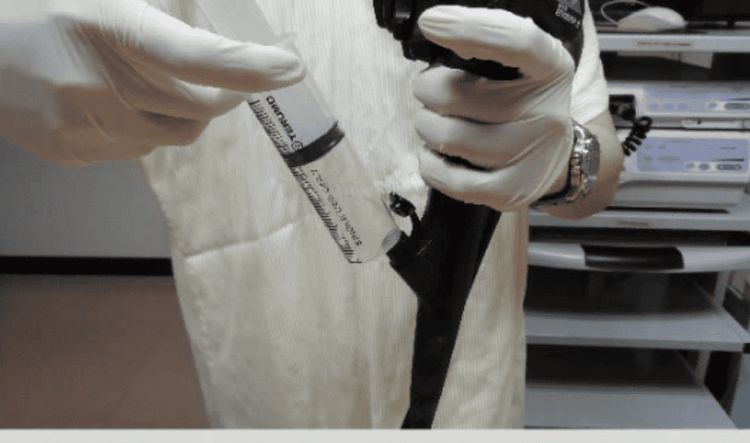
8. Complications when using Hemospray®
Theoretically, Hemospray® can cause thromboembolic complications, intestinal obstruction, intestinal perforation, intestinal obstruction, coagulopathy, allergic reactions, aspiration. However, there are no actual reports on this matter.Transient biliary obstruction with the use of Hemospray® interfering with varicose veins has been reported. Visceral perforation and splenic infarction have also been reported in the study of Alan Hoi Lun Yau et al., however, there is no convincing evidence of Hemospray® related to these two complications (1). To limit the risk of embolism, the catheter tip should be placed at least 1 cm from the bleeding area.
Conclusion:
Hemospray® pump endoscopy is one of many effective endoscopic methods for upper gastrointestinal bleeding. Together with other means of hemostasis, it has helped to increase the possibility of natural hemostasis interventions, reduce invasive interventions for patients, and improve the quality of treatment.
Vinmec International General Hospital is a high-quality medical facility in Vietnam with a team of highly qualified medical professionals, well-trained, domestic and foreign, and experienced.
A system of modern and advanced medical equipment, owning many machines in the world, helps to detect many difficult and dangerous diseases in a short time, supporting the diagnosis and treatment of doctors effectively best. The hospital space is designed according to hotel standards, giving patients comfort, friendliness and peace of mind.
Please dial HOTLINE for more information or register for an appointment HERE. Download MyVinmec app to make appointments faster and to manage your bookings easily.






